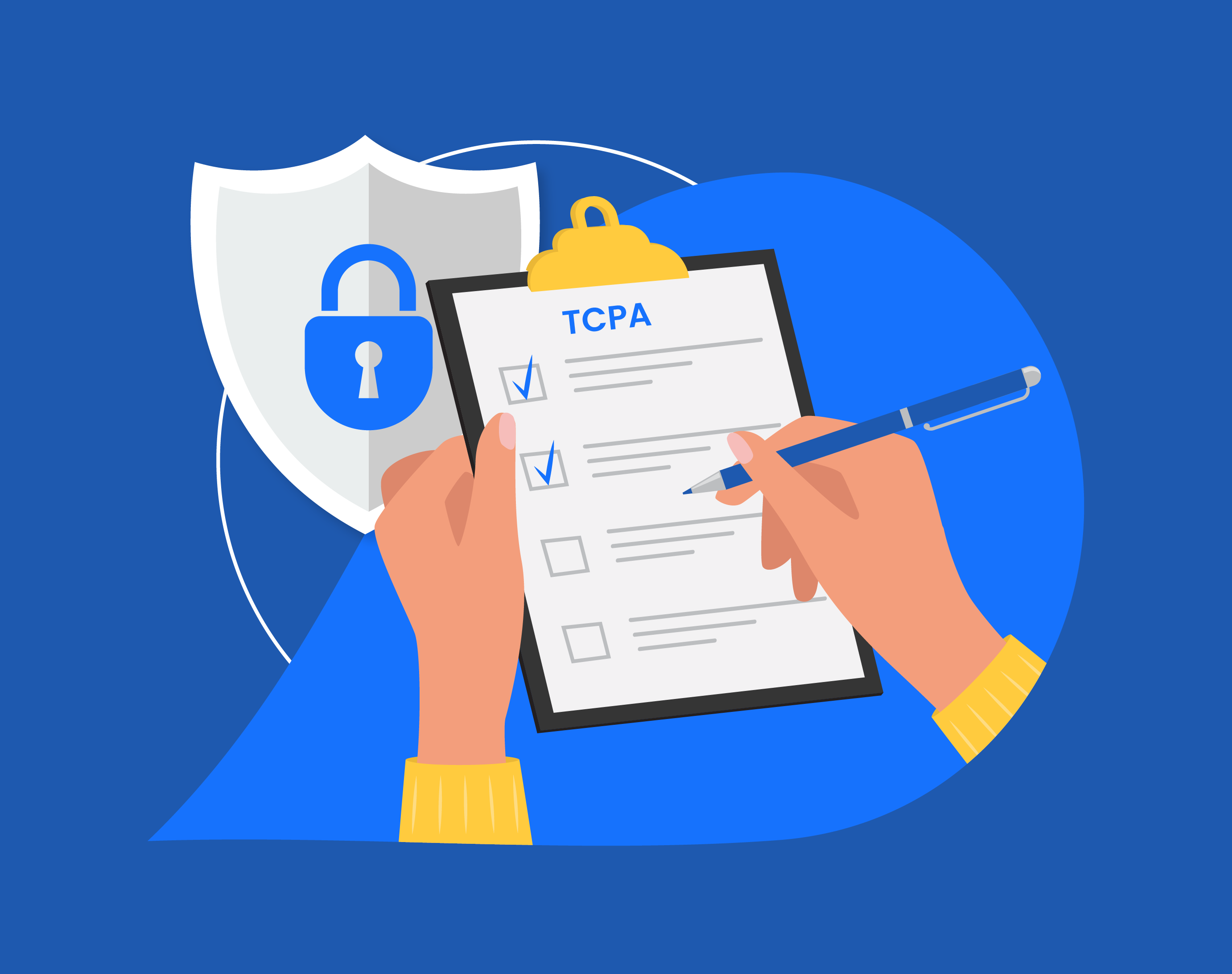The New Key for TCPA Compliance? Data Integration.
A recent FCC Order clarified that when consumers revoke TCPA consent, that request must be honored within 10 business days. This means that enterprises must quickly and seamlessly integrate do-not-call, consent, and contact preference data across systems.
If a change in consent preference is missed or is too slow to reach CRM and ERP systems, there is a chance that non-compliant outreach could be sent. This, in turn, may result in expensive TCPA violations and a breach of trust with your audience. With that in mind, let’s look at the challenges and potential solutions to maintaining compliance through enterprise data connectivity.
In Brief: the FCC Order and Consent Data Management
- The February 2024 FCC Order stated that TCPA consent revocation requests must be honored within 10 business days.
- Gaps or slowdowns in data integration can lead to non-compliant outreach being sent after the 10-day limit.
- There is no one-size-fits-all solution. Enterprises can reduce the burden of data integration by leveraging open APIs and working with partners who understand consent management.
FCC Rules for Honoring Consent Revocation Requests
First, here is the relevant portion of the FCC Order:
“Specifically, we amend our rules to require that callers honor company-specific do-not-call and revocation-of-consent requests within a reasonable time from the date that the request is made, not to exceed 10 business days after receipt of the request.”
Thankfully, this is a bit easier to understand than the previous sections we wrote about. The FCC is simply stating that requests must be honored in a reasonable timeframe. They place an upper limit of 10 business days, though a footnote reminds us that it’s best to honor requests as quickly as possible.
The Challenge of Customer Data Integration
Before we get too much further, we should admit that this is not an easy task. Except for organizations that are only dialing by hand, everybody is coming to grips with this challenge and finding the best path forward. There isn’t a button you can push to solve this problem instantly, but there are resources that form pieces of the answer (more on that below).
With that said, let’s get into it.
To comply with the new TCPA regulations, businesses should strive for real-time access to updated company DNC and opt-out data. This means updating consent preferences promptly and integrating this information across various systems as quickly as possible and with as little error as possible.
For smaller companies or those without complex outreach processes, this may not be too hard. If an organization only has one or two systems processing consumer data, keeping information updated everywhere should be relatively simple.
However, most larger enterprises have more complex data systems. According to Salesforce, marketers in 2024 use an average of nine customer data sources and eight distinct marketing tools, including CRMs, mobile marketing platforms, and customer data platforms. The same report showed just 31% of marketers are fully satisfied that they can unify all this data (Salesforce).

And that’s just talking about averages. For the largest organizations, things are often much more complex.
Consider large enterprises where different groups have traditionally managed communications independently. For instance, the Medicare group might handle customer outreach differently from the pharmacy group. The fraud alert team’s communication strategies may differ from those of the marketing team. But at the end of the day, all these groups and teams reach the exact same customer. And if that customer texts “STOP,” they’ll want it all to stop right away. (Although sometimes they only want some contact to stop.)
Ensuring that all these stakeholders have access to unified and up-to-date DNC and opt-out data is critical for compliance and effective communication. So, what’s the solution?
Data Integration Is Key for TCPA Compliance
As we mentioned above, data connectivity for large enterprises like healthcare, finance, or insurance is not a trivial task. One approach is to tackle integration with in-house resources. The time and resources required will depend on the specific data being processed and the platforms in use.
The first step should be an assessment and planning phase to evaluate your current systems and create a roadmap for the integration project. This roadmap will likely need to include choosing data integration tools, creating an architecture for data flow, lots of quality checks, and a plan for ongoing maintenance.
The time and expense of this project will vary a lot depending on the enterprise’s needs. One factor that could reduce the cost is using software tools with open APIs to make data integration easier.
Another avenue is to work with a third party that offers consent management and preference management services. Drips works with an industry leader in this arena, PossibleNOW, to help our clients tackle this challenge.
Whichever way you choose, making sure your data is integrated is now virtually a requirement for effective and compliant outreach. If there are gaps in your data connectivity, there’s never been a better time to fix them.
How Drips Can Help
At Drips, we know that performance and compliance go hand in hand when it comes to best-in-class consumer engagement. Drips offers several solutions to address these integration challenges and support TCPA compliance.
- Open API and custom CRM integrations: Drips provides an open API, making it easier to integrate your data sources with Drips. We can also build custom CRM integrations to meet our clients’ data needs.
- Engage with an enterprise consent management platform: Drips has worked closely with PossibleNOW, a leader in consent and preference management. This partnership helps our clients benefit from the best tools and practices to keep consumer data synced across complex systems.
- Managed service with compliance in mind: Drip isn’t just another tool to increase your integration headache. We give you a whole team of outreach professionals to make data and compliance management as easy as possible. As we learn about your needs, we’ll analyze your data sources and conduct a consent audit. Our goal is always to deliver customized conversational outbound that’s effective and puts compliance front and center.
Schedule Your Strategy Session
Understanding and implementing these new FCC rules can be complex, but Drips is here to help. Schedule a meeting with our team to explore how our solutions can deliver better results while aligning with your TCPA compliance efforts.
Disclaimer: This article and all information contained in it are for educational and informational purposes only. Neither Drips nor any of the writers of this article are law firms or attorneys, and nothing herein should be construed as or relied on as legal advice. Drips and the authors herein disclaim any obligations relating to the timeliness or accuracy of the information contained here. No warranties should be implied. Although intended to be current and accurate, regulations and court rulings, as well as interpretations of the same, are always changing and we recommend consulting with your own counsel.







